Understanding & Identifying Inflow and Infiltration
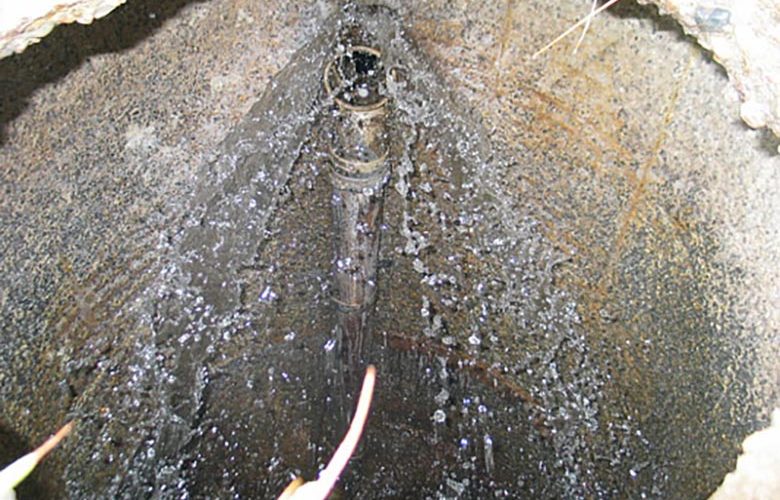
Inflow and Infiltration (also referred to as I/I or I&I) is a major problem facing water authorities and the community across Australia with millions of dollars wasted treating unwanted water each year. In addition, in-ground assets degrade faster, capacity of the system is lost to water and soil ingress and pump station and treatment plant equipment wears out prematurely.
When water moves, it often moves soil and sediment with it resulting in sediment/ soil entering sewers and stormwater systems resulting in the formation of voids and ground subsidence as well as surface and pavement damage around structures.
Inflow is defined as stormwater that directly enters the sewer system through sump pumps, roof drains & catch basins.
Infiltration is defined as stormwater or ground water that indirectly enters the sewer system through pipes, laterals and manholes.
While there are a number of sources of inflow and infiltration, US EPA studies show 30% of infiltration occurs at the manhole.
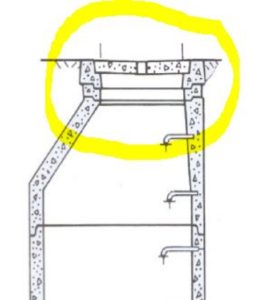
High levels of I/I thru MH Chimney
Depending upon your network and the areas to be inspected, there is quite a range of methods to identify where unwanted water is entering the sewerage network. Most of these methods can be easily and cost effectively carried out by in house staff such as smoke testing, dye testing and physical inspections before, during or after rain events. Specialists can also be brought in where water authorities or councils either don’t have enough staff or perhaps the experience required. Specialist service providers are available that can help, particularly with flow gauging & CCTV inspections.
Methods to identify leakage points
- Smoke Testing
- Vacuum Testing
- Dyed Water Testing
- Flow Gauging (including reviewing and comparing pump station operations during dry and wet weather periods)
- Inspections during & immediately after rain events
- Routine inspections
- CCTV surveys
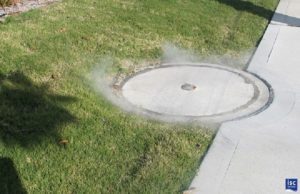
Smoke testing shows leaks from under the frame even after the lid has been sealed
While smoke and dye testing will provide very quick tell tale signs showing the points where inflow and infiltration can occur, there are other obvious signs that can be observed through visual inspections which show evidence that infiltration will be occurring during even small rain events.
For Example
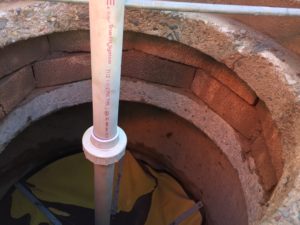
These bricks have obvious gaps that will allow a very large amount of water in during rain events

Large voids and broken mortar as well as root intrusion mean that water will enter the MH at these points
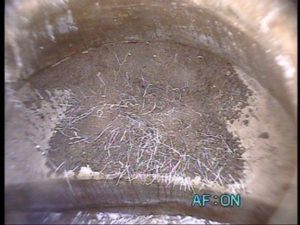
Soil piled on the bench is a clear sign of both water and soil ingress
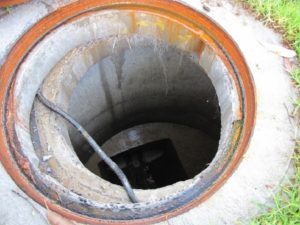
Displaced frame, butyl rope out of place and water staining on the walls indicate this would be a high contributor to I/I

Water stains running down the walls is evidence of infiltration
Major points of failure of a manhole are:
- Poorly fitting or damaged lid
- Frame to riser joint
- Displaced frames / risers
- Precast Joints
- Failed mortar on brick risers
- Failed mortar at joints
- Poorly placed/ broken bricks
- Broken / cracked risers, frames and shaft sections
- Compressed or poorly seated butyl rope
- Failed joint rings
- Damaged inlet / outlet connections
Major causes of infiltration
- Different materials – concrete & cast iron have different thermal expansion and contraction coefficients. This means that they expand and contract at different rates and as neither material is flexible, the interface or joint is doomed to fail and in some cases can do so in a matter of months from new.
- Pavement expansion and contraction – gaps forming around the outside of the frame
- Physical damage soon after construction – this occurs through construction machinery & vehicles running over or near the structure causing joint failure and in worst cases breaking frames, risers and causing joint failure.
- Ground movement – both through compaction and settling and through expansion and contraction of reactive clays as ground water levels change.
- Wear of the bearing surface between the lid and the frame
Can inflow and infiltration be controlled ?
Controlling inflow and infiltration is definitely achievable. While it is not practical or possible to entirely eliminate inflow and infiltration, understanding the causes and sources of inflow and infiltration, developing a program to identify the various contributors and then implementing corrective actions will have a very significant & beneficial impact for water authorities on I&I.
Using an approach that takes into account stopping both existing sources and also to prevent the development of leaks in new constructions are important steps in providing both a short and long term solution to reducing the impacts of I/I and restoring the network capacity.
Stopping existing leakage points and preventing the development of leaks on new constructions will stop the occurrence of sewer overflows caused by rain events, reduce the need to invest in capital upgrades to deal with excess water as well as allowing water authorities to manage the assets proactively rather than reactively.
ISC Services range of infiltration control solutions provides cost effective means to stop existing leaks as well as systems to ensure that leaks don’t develop on new constructions. For more information on solutions such as Infi-Shield Gator Wrap, Aqua Seal and Flex Seal Utility Sealant, go to https://iscservices.com.au/2020/products/